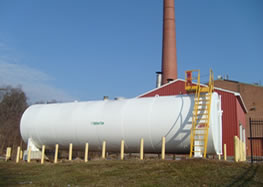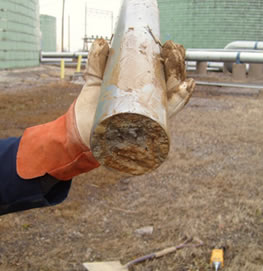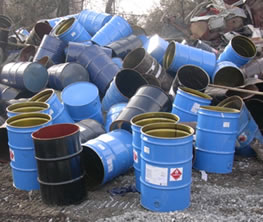Phone: (610) 444-5008 | Fax: (484) 771-9600|Email Us | Connect With Us ![]()
State and Federal regulations require facilities to comply with various environmental programs and prepare numerous environmental management and contingency plans. Hagerty Environmental personnel have experience in investigating the sites, confirming compliance with appropriate regulations and preparing and certifying the appropriate plans. Such programs and plans include:
- Federal Spill Prevention, Control and Countermeasures (SPCC) Plans in accordance with 40 CFR Part 112.7 for petroleum products
- State (PADEP) Preparedness, Prevention and Contingency (PPC) Plans in accordance with PADEP Guidance
- State (PADEP) Spill Prevention Response Plans (SPR) in accordance with Title 25 Chapter 245.512.
- State (PADEP) Emergency containment structure permeability must meet one of two criteria by November 10, 2010 in accordance with Title 25 Chapter § 245.542
- State (NJDEP) Discharge Prevention, Containment and Countermeasure (DPCC) Plans and Discharge Cleanup and Removal (DCR) Plans per N.J.A.C. 7:1E.
- State (DNREC) Release Preparedness Plans (RPP) in accordance with RGAST Title 7 Del. C.
- Federal OPA 90 Response Plans per the Oil Pollution Action of 1990 and Emergency Response Plans in accordance with 29 CFR 1910.120.
Hagerty Environmental personnel include licensed professionals (engineers and geologists) who are experienced in the evaluation of facilities and site-specific conditions and who are appropriately licensed to prepare and certify various compliance plans. Our personnel are licensed in several states including PA, NJ, DE, MD and VA.
Once the appropriate plans have been prepared for a specific site, they require periodic review, modification in accordance with amended regulations and re-certification. Constant changes in the regulatory landscape require review and updating of these plans to remain compliant. The following are examples of review durations and recent regulatory changes requiring re-certification:
- IF: A facility is required to have an SPCC Plan
THEN: The SPCC plan must be re-certified every five years, or sooner if there is a material change in the facility design, construction, operation or maintenance. - IF: A facility has large aboveground tanks in PA
THEN: The tanks must have secondary containment, and that secondary containment must either meet certain permeability requirements by November 10, 2010, or must be certified by a professional engineer. - IF: A facility is subject to NJ DPCC/DCR Plans
THEN: The plans must be reviewed, revised and reapproved by NJDEP every three years.

 40,000 gallon dual-containment AST at facility – SPCC Plan prepared by Hagerty
40,000 gallon dual-containment AST at facility – SPCC Plan prepared by Hagerty
 Undisturbed Shelby tube sample collected to determine permeability compliance for AST secondary containment
Undisturbed Shelby tube sample collected to determine permeability compliance for AST secondary containment
